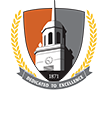Proposal Development
When preparing a grant proposal, a variety of information may be needed and will vary depending on the criteria listed in the RFP (request for proposal), solicitation or sponsor guidelines.
Sources/Agencies Requiring Registration
Often when you begin reading the RFP (solicitation) you will note that there can be a requirement(s) for the institution to be registered in an electronic submission system. Most likely this has already occurred. However, the application system will require the PI (faculty member) to have a profile. For example, the National Science Foundation (NSF) requires registration in Research.gov; other federal sites include NIH (eRA Commons), Grants.gov, and NASA.
In addition, NSF and NIH now require the PI (and all Senior / Key Personnel) to utilize SciENcv for creation of their Bio Sketch and Other Support (Current and Pending) documents. For this to occur, the PI must first create a profile in ORCiD.
Even individual foundations may require an institutional registration in order to proceed with a proposal submission. Please check with us prior to registering.
NOTE: Do not register yourself or attempt to register our institution – contact Meaghan Stern or Jessica Berg. This responsibility lies with Pre-Award and/or the campus Authorized Organizational Representative. If you have any questions, please contact us.
Information about Buffalo State and the Research Foundation for SUNY
Many proposals require institutional information and/or statistics, as well as information about Buffalo and/or the Western New York area. Some also require a description and information about the Research Foundation for SUNY and its relationship with SUNY. Below are various sites or documents that may prove helpful in preparing these documents.
Statistical Data and Information on Buffalo State College and Local Area
Faculty are often required to include institutional information in a proposal. Below are links to various resources – Buffalo State University, the City of Buffalo and the US Census Bureau.
Institutional Research – for example Student Enrollment (Gender, Age, Ethnicity, etc.); Fact Sheets (per semester); and Reports (graduates) – Sample introductory paragraph
City of Buffalo – Maps, census data by neighborhoods, other census statistics
US Census Bureau Quick Facts – land facts, population data, ethnicity data
Information About the Research Foundation
Strategic Plans
Consider Including a description of how the proposed project correlates to the strategic plans of the organization. To review relevant campus and SUNY strategic plans follow the link(s) below.
Budget Information
Fringe Rates and Indirect Cost Information
Certain required costs, such as fringe benefits and indirect costs, need to be reflected in a proposal budget. These are represented as standardized rates established by the Research Foundation for SUNY and Buffalo State. Below are links to the most recent information:
Cost Sharing, F&A Recovery and Research Space Information
The following information can be helpful to you when completing your Routing Sheet:
Not Funded? What to Do Next – Some Recommendations
First, many proposals are not funded on the first try. It does not mean that your idea, research, training, etc., is not fundable. Revisions or redirection are often required. All federal agencies will make the reviewers' comments available to you. The National Science Foundation and National Institutes of Health are available electronically; generally others send them to the Principal Investigator via regular mail. Occasionally, you will need to request the comments. Private corporations and foundations may choose not to offer reviewer comments.
It is always a good idea to request that a colleague in your field review your proposal, especially if the reviewer comments indicate pedagogical or research methodology issues. As always, Pre-Award is happy to review your proposal narrative for clarity, grammar, and readability to a general audience.
Many funding opportunities are cyclical and if the priorities are still in line with your proposed study, you should consider reapplying for the next round. Make note of future submission dates. Share this information with Pre-Award.

